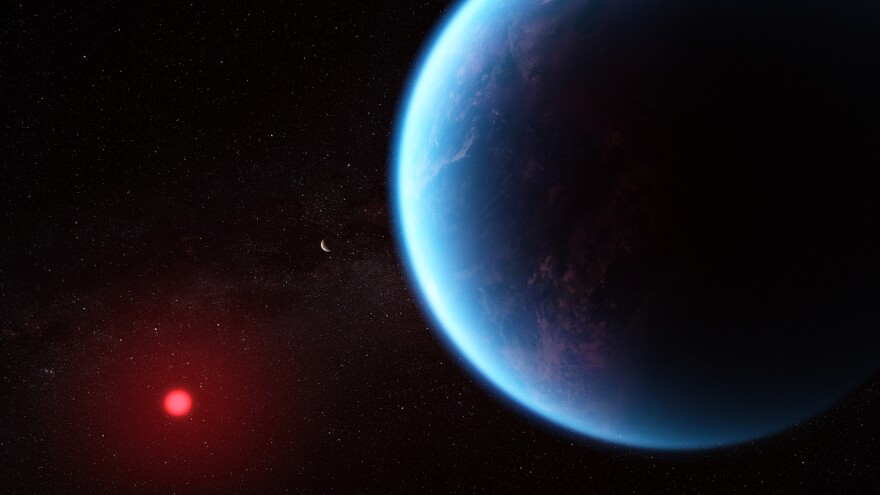Scientists using the James Webb Space Telescope recently announced the discovery of gases on a faraway planet that may be the same as those produced by ocean plankton on Earth. But a North Carolina astrophysicist is cautioning people to take note that researchers stressed it’s not a discovery of actual living organisms and that the findings should be viewed cautiously until further observations have been completed.
The planet, called K2-18 b, is about 124 light-years from Earth, and Rachel Smith, the head of the Astronomy & Astrophysics Research Lab at the North Carolina Museum of Natural Sciences, said researchers detected dimethyl sulfide and dimethyl disulfide, which on Earth are produced only by biological processes.
“Molecules that could signal that there's life, but it's very tenuous that way because the models we don't even know the combination of molecules that will tell us if there's life on a planet,” she explained.
Addressing a recent report in the New York Times about the discovery, Smith said contemplating life on that planet from just the discovery of one molecule is misleading.
She said, “A follow up comment from another planetary scientist was saying they don't even know if the planet is a hycean world. It could be a volcanic world, so then there would be another explanation we'd have to find for the molecule.”
A hycean planet is a hypothetical type of planet that features a liquid water ocean underneath a hydrogen-rich atmosphere.
Smith said the discovery of a possible bio signature is still notable and it points to the advances that have been made in science and technology in recent years.
“This discovery is interesting,” she said, “It's a more robust observation of a molecule that could be there and making it an interesting world to keep investigating.”
But Smith added, “Maybe don't say we discovered possible life because the problem with that, of course, is that it dilutes real discoveries and then and then people stop believing scientists, right?”
The finding captured a lot of attention when it was announced at the end of March, not just from the scientific community, and Smith believes she knows why.
“We can't fathom this idea that we could be alone in the universe or galaxy, however, you want to think about it, and I think all of these constructs that people have about how we fit in the galaxy and the universe and this grand scheme of like what we mean is on a planet Earth I think (it) absolutely makes more sense to them to connect to whatever aliens they learned about and saw in the movies or whatever,” she said.
Smith often discusses the science and the myths that surround UFOs, and how they fit in the ongoing search for extraterrestrial intelligence.
“We talked about those observations and we talked about how it could be the military and all these things that have to be disproven before you can even consider that it's aliens and all of the conspiracies that have been disproved,” she said. “Then people still believe about aliens and UFO's and people don't care. They just believe it anyway.
The Kardashev scale is a hypothetical classification system for civilizations based on their ability to harness energy. Type I, a civilization capable of using all the energy on their planet – this is where Earth fits. A Type II civilization would be capable of harnessing all energy from their star.
“We can't even sustainably utilize the energy on our planet and the scale you know for the Type 3 civilization, which would be Star Wars, that is a civilization that actually can harness the energy of their entire galaxy and go at light speed,” Smith said, “We've been impressed upon for a very long time about not only that science fiction that people relate to, which is storytelling, which makes sense, because that's what we do, we infuse things we don't understand with stories, but also this idea of mistrust of our institutions, like the government.”
And she said if there were aliens like Marvin the Martian or Edgar the Bug in our galaxy, we’d certainly know about their existence by now. “We haven't found any evidence for this near us, and I think this idea of what people really want is aliens and spaceships and visitors is nowhere near us because we see it already. We see this brimming population of galactic aliens,” Smith said.



